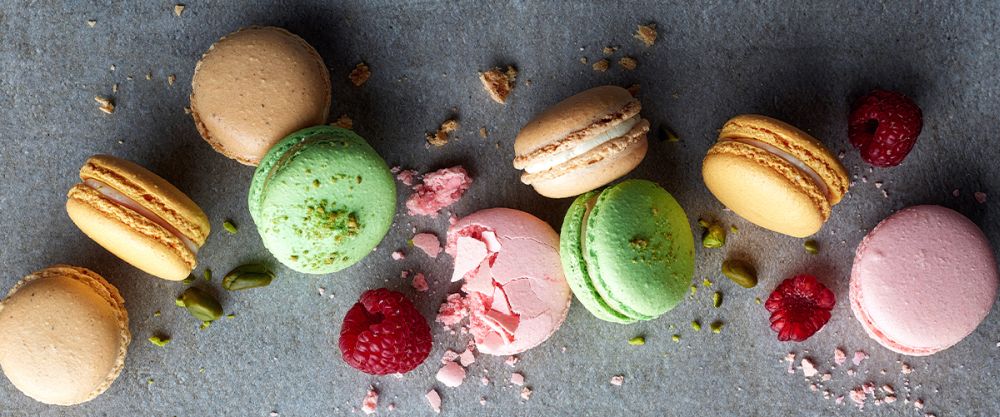In our Instagram age, French patisserie and sweet treats have seen an incredible surge in popularity, with many cafés and bakeries delighting customers with artisanal petit fours, pastel macarons, and perfectly iced cupcakes. Whether you’re sitting down for a ladies’ afternoon tea or spoiling yourself, these bite-sized mini treats are not only gorgeous to look at but satisfying to every secret sweet tooth as well.
But it’s not only modern-day gourmands who have enjoyed these small delights! Petit fours, macarons and cupcakes each have a storied history, so settle in with your preferred mini dessert and a pot of your favourite tea while we share the stories behind our irresistible sweets.
A sweet tooth’s dream: Petit fours
Petit fours (meaning “small ovens” in French) are bite-sized mini pastries that can be savoury or sweet. You’ve probably seen an assortment on a cake stand at high tea or in the display case at a fancy patisserie, and they can be eaten as an appetiser or singular dessert, depending on your preference (but you’ll probably want more than one!).
Dating back to France in the 18th and 19th centuries, petit fours were traditionally made while the oven was heating up or cooling down from high heat (or ‘grand four’) in the process of baking meat or bread. While the term ‘grand four’ has now been phased out of English parlance, as well as the need to tailor your cooking practices to Victorian-era oven technology, petit fours have persisted in their reign as a delicate tea-time treat.
But did you know there are four types to choose from?
- glacé/glazed (iced pastries like éclairs)
- salé/salted (savoury pastries like mini quiches)
- déguise/disguised (sugar- or chocolate-coated fruit)
- sec/dry (plain pastries like biscuits and macarons).
All these petit fours are extremely fragile and require highly specialised packaging to transport. So (subtle plug time), this is where we recommend using our range of specialty cupcake packaging to ensure the safe delivery of these delectable bites.
Macarons are the most popular type of petit fours, with their iconic smooth, meringue-based cookies sandwiching delectable ganache or buttercream. As much as the French may deny it, macarons were actually derived from sandwich cookies made in a Venetian monastery in the 8th century.
This presentation style travelled to France with Catherine de Medici's tastes, an Italian duchess who married King Henry II of France in 1533, where the court kitchens refined them. The next stage of macaron development was over 200 years later, by the hands of two Carmelite nuns known as the 'Macaron Sisters', who baked and sold macarons in return for political asylum during the French Revolution.
Another century passed before the iconic ganache filling was introduced between the two almond-based cookies. What we know of as a macaron today was perfected by Pierre Desfontaines, the founder of the iconic French patisserie, Ladurée.
This diverse history all contributed to the time-consuming and highly perfectionistic cooking process for which macarons are renowned. While their cooking is best left to the professionals or highly experienced bakers, macarons are now an extremely popular dessert for all to eat — coming in a wide range of flavours from matcha to raspberry to gin and tonic! Our macaron gift boxes are perfect for transporting these temperamental (yet divine) sweet treats for your friend, your lover or yourself!

